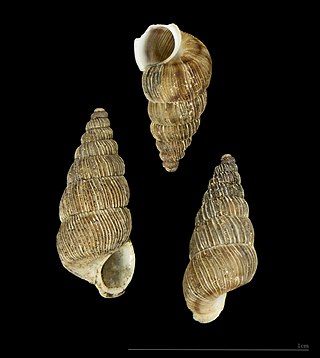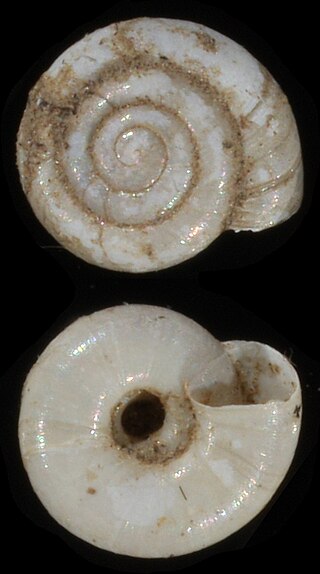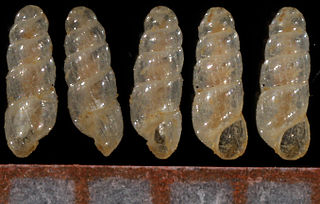
Cochlostomatinae are a family of small land snails which have opercula and gills. These are terrestrial gastropod mollusks in the superfamily Cyclophoroidea.

Limacidae, also known by their common name the keelback slugs, are a taxonomic family of medium-sized to very large, air-breathing land slugs, terrestrial pulmonate gastropod molluscs in the superfamily Limacoidea.

Gyraulus is a genus of small, mostly air-breathing, freshwater snails, aquatic pulmonate gastropod mollusks in the family Planorbidae, the ram's horn snails.

Cochlostoma is a genus of land snails with an operculum, terrestrial gastropod mollusks in the family Cochlostomatidae.

Platyla is a genus of very small land snails with an operculum, terrestrial gastropod molluscs or micromolluscs in the family Aciculidae.

Vitrea is a genus of small, air-breathing land snails, terrestrial pulmonate gastropod molluscs in the family Pristilomatidae.

Oxychilidae is a taxonomic family of air-breathing land snails, terrestrial pulmonate gastropod mollusks in the superfamily Gastrodontoidea.

Pyramidula is a genus of very small, air-breathing land snails, terrestrial pulmonate gastropod mollusks or micromollusks in the family Pyramidulidae.

Acicula is a genus of very small land snails with an operculum, terrestrial gastropod mollusks in the family Aciculidae.
Stefan Clessin was a German malacologist.
Cochlostoma pageti is a species of small land snail with an operculum, a terrestrial gastropod mollusc in the family Cochlostomatidae.








